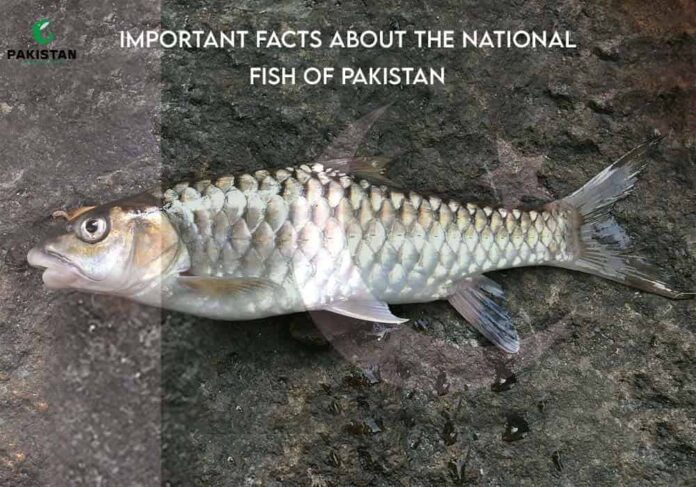Mahseer fish can be found in all provinces of Pakistan in semi-cold fresh water. Another name for the Mahseer fish is the “King of Swat”. Pakistan is an ideal location to find Mahseer. Mahseer, also called the Himalayan Mahasher or Golden Mahasher, are extremely valuable eating fish in Pakistan and a significant commercial game fish.
Pakistan offers some of the world’s greatest freshwater Mahseer fishing opportunities to fishermen. Because of their size, high market value, golden appearance, and extended shelf life, mahseers have been very significant to Pakistani local fishermen. This blog will highlight a few significant facts about the Golden Mahseer.
Statistics And Facts Of The National Fish Of Pakistan
Below are comprehensive statistics and facts regarding the national fish of Pakistan:

- The Golden Mahseer (Tor Putitora) is associated with the Cyprinidae family and the Tor genus.
- This species can grow to be 2.75 metres (9 feet) long and weigh more than 54 kilogrammes (120 pounds). It can be identified by its golden-coloured scales, strong physique, and huge, large fins.
- The Golden Mahseer inhabits rivers and lakes throughout South and Southeast Asia, particularly India, Nepal, Bhutan, Pakistan, and Myanmar.
- This fish favours clean, fast-flowing channels and stream systems with stony and sandy bottoms, although it also lives in lakes and ponds.
- The Golden Mahseer is omnivorous, consuming algae, insects, crustaceans, and tiny aquatic creatures. The diet of young mahseers primarily includes invertebrates.
- The Golden Mahseer is well-known for its migratory habits. During the monsoon season, which usually lasts from June to September when the waters are high, it migrates upstream to spawn.
- The Golden Mahseer breeds in a way that they move upstream to lay eggs in sandy beds during the breeding season. Depending on the temperature of the water, hundreds of eggs laid by females can hatch in as little as a week.
- Mahseer babies inhabit shallow waters with lots of cover until they reach a large enough size to go into deep waters.
- In the wild, golden mahseers usually survive 10 to 15 years, though some may live for decades.
- The IUCN has designated the Golden Mahseer as endangered because of habitat degradation, pollution, overfishing, and the construction of dams that obstruct their migratory paths.
- Golden Mahseer prefers water temperatures of about 10°C and 20°C (50°F to 68°F) and can be spotted at heights ranging from 200 metres to over 2,000 metres (650 to 6,560 feet) above the ground.
- Overfishing, habitat deterioration due to deforestation, agricultural runoff, pollution from industry, and climate change, all of which alter water flow and temperature patterns, pose major threats to the Golden Mahseer.
- According to some estimates, Golden Mahseer populations have fallen by more than 50% in recent decades.
- Francis Buchanan-Hamilton, a Scottish biologist, published the first scientific description of the Golden Mahseer in 1822.
- A single female Golden Mahseer can deposit between 10,000 and 30,000 babies per spawning season.
- The eggs of the Golden Mahseer hatch around 5 to 7 days, based on water temperature.
- In certain hatcheries, the survival percentage of captive-bred Golden Mahseers released into the wild exceeds 70%.
- Maximum dissolved oxygen concentrations for Golden Mahseer habitats exceed 5 mg/L.
- More than 30% of the Golden Mahseer’s native habitat has been lost or destroyed due to human activity.
- Over 500 Golden Mahseers have been tagged and tracked in modern research to investigate their migratory habits and habitat utilisation.
- According to studies, the financial worth of ecosystem services given by Golden Mahseer habitats may approach $100 million per year.
- According to predictions, as an effect of climate change, appropriate habitats for the Golden Mahseer may diminish by up to 40% by the end of the century.
- Annual population monitoring for Golden Mahseer in a single river system might cost between $50,000 and $100,000.
- Overfishing and habitat degradation have reduced the average size of caught Golden Mahseers by 15-20% during the last 20 years.
- Female Golden Mahseers are often larger than males, by 10% to 20%, which helps with egg production.
Conclusion
The National Fish of Pakistan, the Golden Mahseer, lives in semi-cold freshwater across all provinces and is regarded as the “King of Swat”. This species, which can reach 2.75 metres and weigh more than 54 kilogrammes, favours clean, fast-flowing water and migrates upstream to breed during the monsoon season. The Golden Mahseer, which is highly coveted for its size, market value, and attractiveness, is threatened as a result of habitat degradation, pollution, overfishing, and climate change, with numbers dropping by more than half in recent decades. Conservation activities, including hatcheries and tagging studies, aim to safeguard this species, which is critical to local ecosystems and the economy, delivering ecosystem services worth almost $100 million each year.


